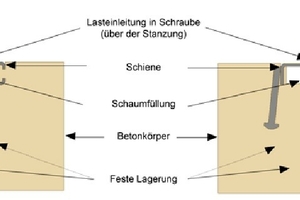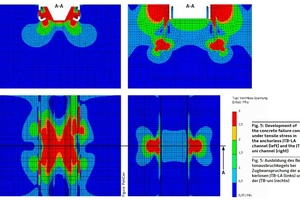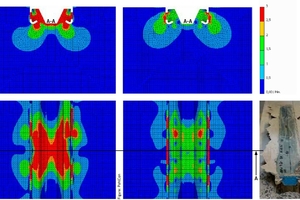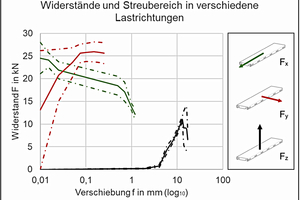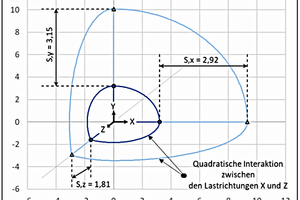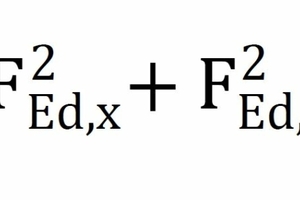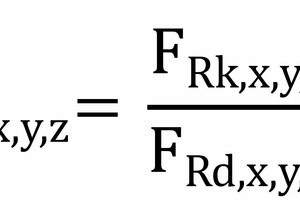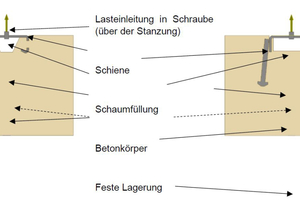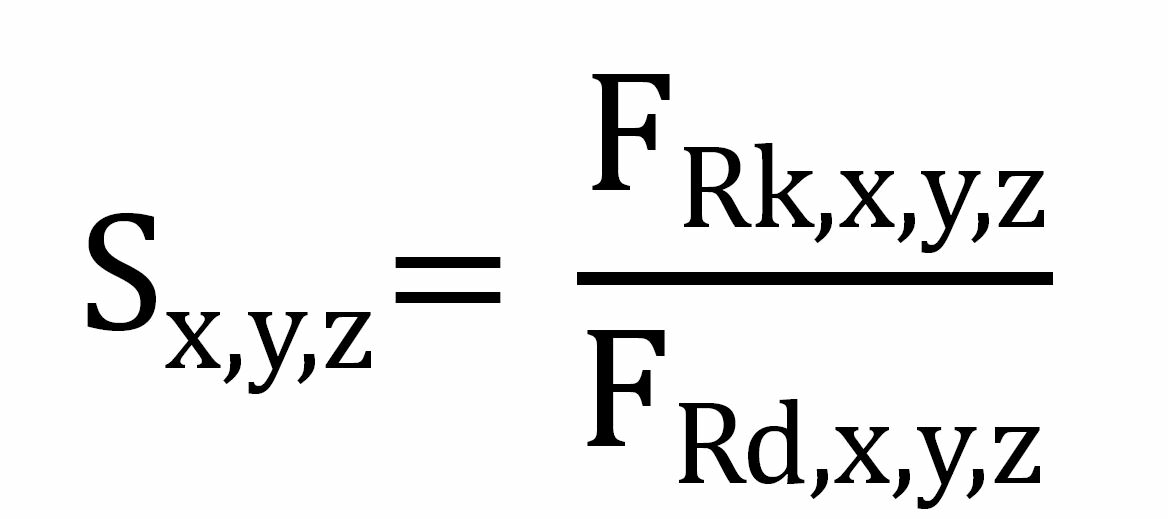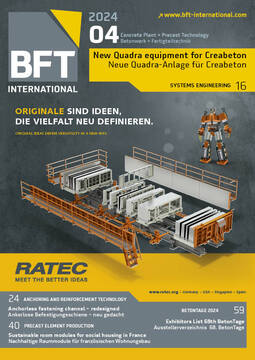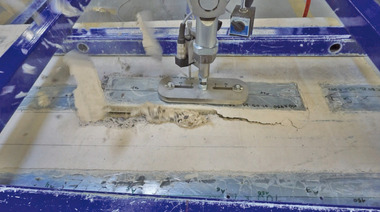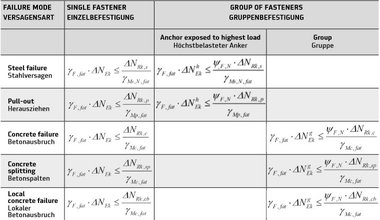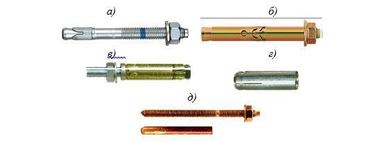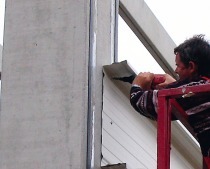Anchorless fastening channel – redesigned and verified
With increasing load requirements and, at the same time, significantly reduced installation space, products for load application must be developed which meet the requirements without the need for deep anchoring. The recently approved anchorless JTB-LA fastening channel from Pohlcon allows loads to be applied to much more slender precast concrete elements.
With increasing load requirements and, at the same time, significantly reduced installation space, products for load application must be developed which meet the requirements without the need for deep anchoring. In addition, material and resource savings are increasingly becoming a must in requirements specifications along with typical parameters such as the transferable forces. The recently approved anchorless JTB-LA fastening channel from Pohlcon allows loads to be applied to much more slender precast concrete elements, thus minimizing the design effort and increasing creative freedom.
Knowledge gained over 110 years ago is used in new developments, adapted to current requirements in construction, and expanded: the path to anchorless fastening in concrete is reached via the predecessors of the anchor channel and draws on similar concepts. Prior to the invention of the conventional anchor channel in 1913, loads were applied via trapezoidal timber strips shaped so as to create an undercut below the concrete surface. Resistance was slightly improved by using angled nails. In 1966, engineers at the then Deutsche Kahneisen Gesellschaft developed the trapezoidal anchor channel, which represented an entirely new type of profile for precast concrete construction [DKG2007]. Similar to the previously used timber strips, it created an undercut in the concrete solely as a result of its shape. Over time and with increasing load requirements, attached stirrups and wires were replaced by I anchors and round anchors as tieback anchorage [KRA2003]. The trapezoidal shape was replaced by the more efficient C-profiles, which were capable of withstanding higher loads due to larger angles. Channels with small anchors were used for smaller loads, with screws bolted directly into the back of the channel (Fig. 1).
Anchoring solutions for slender designs
With a view to current and future projects, which increasingly prioritize the use of slender structures, anchors set deep into the concrete are no longer geometrically suitable for applying the required loads to the concrete element. One method of applying the load without anchors on the channels is to use the geometry of the channel itself as concrete undercut, similar to the trapezoidal timber strips or trapezoidal channels, but without expanding the concrete as before and thus promoting cracks. The profile of the newly developed, anchorless JTB-LA channel (Fig. 2, left) achieves load application not by expanding the concrete but by means of an undercut in which the flanges of the channel interlock behind the concrete.
In order to strengthen the connection between the channel and the concrete and to make sure that the channel is securely held in place, the anchorage itself was redesigned in addition to the undercut. Instead of deeply embedded anchors applying the load to the concrete, the opposite approach is used: removing material by means of die cuts in the flanges of the channel ensures efficient load application while simultaneously reducing the anchoring depth. The concrete flows through the die cuts and between the flanges of the channel, turning them into a linear anchor (Fig. 2, right).
Experimental tests and confirmation of the theory
The connection between the back of the channel and the fastener can be easily adjusted via the sheet thickness and, in the case of the anchorless JTB-LA fastening channel, is specified by the manufacturer of the fasteners used. As in most applications of anchoring in concrete, resistance is limited by the resistance of the base material to developing a concrete failure cone [ELI1991, ELI1998]. The properties of the base material remain the same in the new anchoring approach. In tests, the characteristic concrete failure cone is evident as failure mode (Fig. 3).
Simulation models were derived in parallel to the tests performed within the scope of the optimization effort. These make it possible to visualize mechanical effects and to make specific improvements (Fig. 4). The tensile load is 6.5 kN in the solid model and 3.25 kN in the half-section, respectively, applied to a steel cylinder representing the screw. The concrete body is fastened at the front and rear along the axis of the channel in order to emulate the most common application [PCN2022]. The height of the concrete body and the edge spacings conform to minimum dimensions specified in the technical approval [PCN2148]. All contact surfaces exerting pressure on the concrete are assumed to be bonded. In the evaluation, the channel itself is hidden, and the stress induced into the concrete is examined. C25/30 concrete is used as material model, with a tensile strength of 2.4 MPa on the software side (2.6 MPa in DIN EN 1992-1-1).
In comparison with point load application (Fig. 3, top, and Fig. 5, right), the projected triangular surface of the concrete failure cone is linear along the longitudinal axis of the channel or the linear anchorage effected by the flanges of the channel, respectively. In supporting numerical simulation models, the stress induced into the concrete can be visually emulated in its characteristic pattern (Fig. 5). Red areas indicate positions that are in the area of concrete failure.
The results show that, when using linear anchoring, the stress is applied less by point loading but rather over a significantly larger area than is the case in a channel variant with deeply embedded anchors. If the stress is shifted towards lower maximum values in the model, the undulating failure pattern along the channel becomes apparent at each die cut. As before, load application directly above the web of the JTB-LA channel represents loading directly above an anchor, the most unfavorable case of applying the load. Until the load is applied to the concrete, the channel is capable of significantly less deformation work compared to fastening above the center of the die-cut (Fig. 6). The process of optimization was completed by a geometric parameter study on the linear anchorage effected by the flanges of the channel, and verified by means of experimental tests.
From test result to technical approval value
Comprehensive testing of all directions of loading was also part of the work to optimize the anchorless JTB-LA profiled metal sheet channel (Fig. 7). Concrete failure was forced in these sets of tests in order to determine the maximum transferable force of the linear anchorage.
The results indicated significantly increased resistance values under shear loading of the anchorage system. At the same time, failure occurs with significantly less deformation. According to the tests, the anchorless channel may be loaded in three directions. In the case of simultaneous loading in different directions, the total load FRd is calculated using quadratic interaction according to equation (1).
where
FRd - approved total loading of the JTB-LA-bxt channel
FEd,x,y,z - load action longitudinal (x), transverse (y) and normal (z) to the axis of the channel
Using the lowest resistance from tests normal to the axis of the channel as the relevant parameter for the permissible resistance FRd for all directions of loading simplifies the calculations of the resultant loads along a spherical surface between the load directions. This results in ample safety margins in the load directions longitudinal and transverse to the axis of the channel (equation (2), Fig. 8).
where
Sx,y,z - safety longitudinal (x), transverse (y) and normal (z) to the axis of the channel;
FRk,x,y,z - test resistance longitudinal (x), transverse (y) and normal (z) to the axis of the channel;
FRd,x,y,z - approved resistance longitudinal (x), transverse (y) and normal (z) to the axis of the channel.
The test results shown in Fig. 8 indicate the characteristic resistance values with the relevant failure occurring between the self-drilling screw used and the back of the channel. This occurs where concrete failure is not forced using technical means. Depending on the channel geometry, the safety values S vary, in the direction of the main longitudinal (x) or transverse (y) load directions, in the range of 2.9 to 3.1. Comparing these ranges to the approved values of the conventional JTB-uni channel with deep-seated anchors, 37% to 65% of the load may be transferred in tensile direction over the same length with the near-surface linear anchorage. However, the anchoring depth is also reduced by 65% in comparison with the JTB-uni channel. Compared to the JTB-AR channel with stirrup anchors, the reduction is as much as 76% (see Fig. 4 and Fig. 5 as well as [PCN161, PCN2148, screw spacing 150 mm]).
Anchorless channel system for precast concrete elements
The new, anchorless fastening channel enables the loads to be reliably applied in three directions to thin concrete elements from a minimum height of 150 mm [PCN2148]. Dispensing with the deep anchorage prevents overlapping with the reinforcement, thus allowing flexible positioning of the anchorless JTB-LA fastening channel on the formwork or the subsequent concrete surface. Since it requires no minimum concrete cover, it can be installed in precast concrete elements of slender design. On site, different structures are installed flush with the surface in a single step using self-drilling
screws.
Eliminating deep anchors while maintaining effective load application offers significant advantages for designers, precast plants and concreting on the construction site. With a view to the current and increasing future use of lightweight construction elements, the anchorless JTB-LA fastening channel not only creates design and dimensioning freedom but also offers great potential for material and resource savings.
The maximum loads have been verified in national technical approval Z-21.4-2148 [PCN2148]. The choice of material and coating complies with corrosion resistance class C 3 [ISO12944] and permits use of the channel in many indoor and outdoor applications. The choice of concrete strength also covers a wide range of applications with strength classes C25/30 to C50/60. Restricting the unused technical potential in the form of higher loads that could be transferred in the main longitudinal and transverse load directions, the technical approval offers significant advantages including simplified calculation of the total resistance, choice of the appropriate anchorless channel from a table, and resulting high safety values in the main load directions. All parameters for installation, positioning and loading are included in the approval. The following holds true for future construction: those wishing to use slender structures can no longer afford deep anchoring.
REFERENCES/LITERATURVERZEICHNIS
DKG2007 Virnich, C.-J. (2007). Ein Pionier wird 100. Deutsche Kahneisen Gesellschaft mbH, Jordahl Befestigungstechnik (1. Auflage). Geschichtsbüro Verlag, Köln. ISBN 978-3-940371-05-8. Seite 38.
ELI1991 Eligehausen, R., Ozbolt, J.: Use of the tensile strength in anchorage to concrete. Structural concrete : IABSE colloquium Stuttgart 1991. Zürich, 1991 (IABSE reports 62). - ISBN 3-85748-063-7, S. 731-736
ELI1994 Eligehausen, R., Thomas M.,S.: Moderne Befestigungstechnik. Hering, Jürgen (Hrsg.): Artur Fischer : Reden beim Symposium aus Anlaß der Verleihung der Ehrendoktorwürde (Dr.-Ing. E.h.) an Senator E.h. Prof. Dr. phil. h.c. Artur Fischer durch die Univ. Stuttgart am 9. Dez. 1994. Stuttgart : Univ.-Bibl., 1994, (Reden und Aufsätze / Univ. Stuttgart 49), S. 22-48
ELI1998Eligehausen, R., Sawade, G.: Anchorage to concrete. Elfgren, Lennart (Hrsg.): Fracture mechanics of concrete structures. London : Chapman and Hall, 1989. - ISBN 0-412-30680-8, S. 263-280
JOR1913 Jordahl, A. (1913). Geschlitztes hohles Bewehrungseisen für Eisenbetonbauten zur Aufnahme von Befestigungsbolzen für Lagerböcke u. dgl. Kaiserliches Patentamt (292751). https://depatisnet.dpma.de/DepatisNet/depatisnet?action=basis (DE000000292751A).
JTB2023 PohlCon GmbH. JORDAHL® Trapezblechbefestigungsschiene JTB. Produktwebsite. Available at https://pohlcon.com/produktkategorien/befestigung/befestigungstechnik/jordahl-trapezblech-befestigungsschiene-jtb. Accessed 02.05.2023.
KRA2003 Kraus, J.: Tragverhalten und Bemessung von Ankerschienen unter zentrischer Zugbelastung. Institut für Werkstoffe im Bauwesen der Universität Stuttgart. 08.07.2002. München.
PCN161 JORDAHL Trapezblechbefestigungsschiene JTB als Verankerung in Betonbauteilen. Allgemeine bauaufsichtliche Zulassung abZ. Available at https://pohlcon.com/fileadmin/user_upload/jordahl-group.com/downloads/approvalsabZ-21.4-161_Trapezblechbefestigungsschiene_JTB-AR_und_JTB-uni.pdf. Accessed 02.05.2023.
PCN1998 JORDAHL Trapezblechbefestigungsschiene JTB-uni als Verankerung in Betonfertigteilen. Allgemeine Bauaufsichtliche Zulassung abZ. Z. 21-4.161:1998-02. Ersetzt durch [PCN161]
PCN2022 PohlCon GmbH. JORDAHL Schienen und Zubehör Katalog. Available at https://pohlcon.com/fileadmin/user_upload/jordahl-group.com/downloads/Broschueren/de/PC-LIT-TI-SUZ-DE_WEB.pdf. Accessed 09.06.2023. Ausgabe November 2022. Seite 76.
PCN2023 PohlCon GmbH. 110 Jahre Ankerschiene. Available at https://pohlcon.com/unternehmen/news-und-presse/details/110-jahre-ankerschiene-ein-grund-zum-feiern. Accessed 03.08.2023.
PCN2148 JORDAHL Trapezblechbefestigungsschienen JTB-LA als Verankerung in Betonfertigteilen. Allgemeine bauaufsichtliche Zulassung abZ. Deutsches Institut für Bautechnik DIBt. Available at https://www.dibt.de/de/service/zulassungsdownload/detail/Z-214-2148. Accessed 02.05.2023.
ISO12944 Europäisches Komitee für Normung. Korrosionsschutz von Stahlbauteilen durch Beschichtungssysteme. Teil 2: Einteilung der Umgebungsbedingungen. DIN EN ISO 12944-2:2018-04.

![Fig. 1: Profiled metal sheet façade fastened in a JTB-uni lightweight channel with anchors [PCN1998]](https://www.bft-international.com/imgs/2/0/7/5/1/0/5/tok_d0c7e4c6bd29a14fab7535bdedae3043/w300_h200_x420_y250_Bild_1-8c7ca8ea0b29db3e.jpeg)
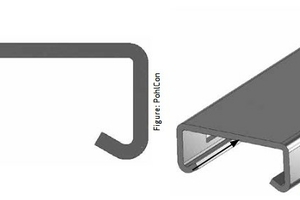
![Fig. 3: Concrete failure cone of an undercutanchor [ELI1994] (left) and an anchorless JTB-LA channel (right)](https://www.bft-international.com/imgs/2/0/7/5/1/0/5/tok_cd25fde764658ca9f7702a3bae4b0d83/w300_h200_x521_y134_Figure_3-ccec53f1223b850f.jpeg)
